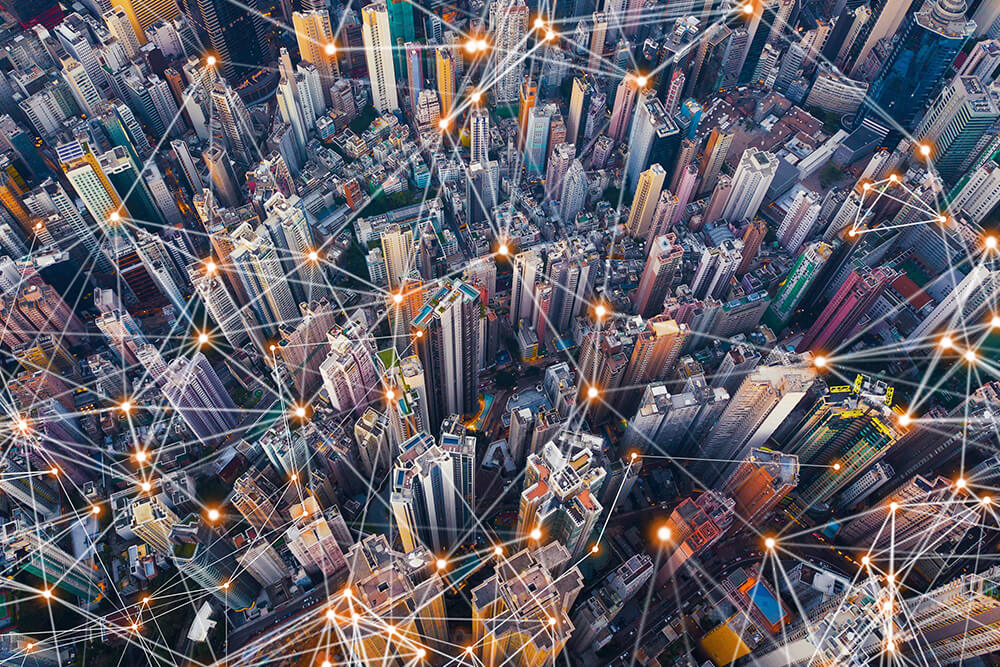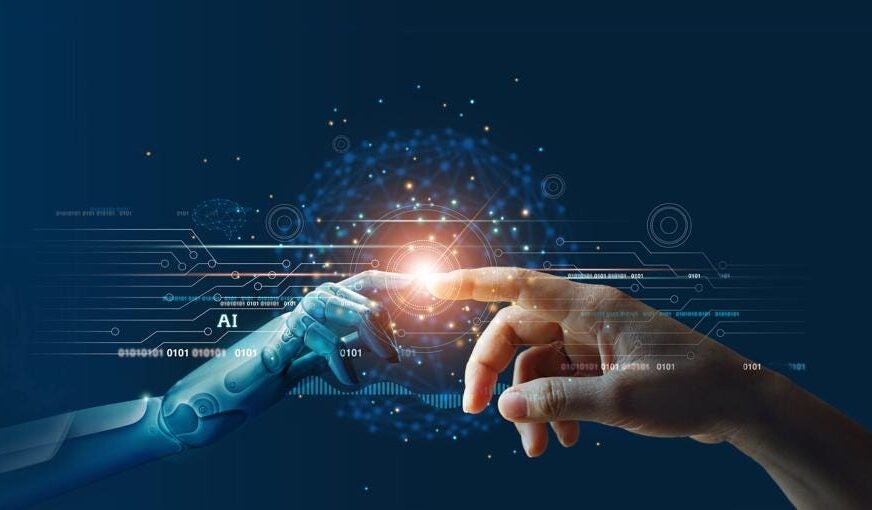As urbanization accelerates, cities around the world are under pressure to become more efficient, sustainable, and livable. In response, the concept of “smart cities” has emerged, leveraging technology and data to address urban challenges and improve the quality of life for residents. Smart cities use cutting-edge technologies such as interconnected systems, data analytics, artificial intelligence (AI), Internet of Things (IoT), and 5G networks to optimize infrastructure, enhance public services, and create a sustainable environment.
This paper explores the key technologies driving smart cities, the benefits they bring, and the challenges that lie ahead in building the cities of the future.
1. the foundation of smart cities Technology and Connectivity
At the core of any smart city is technology, particularly the integration of sensors, devices, and data systems that enable real-time monitoring and management of urban infrastructure. These technologies form the foundation of a smart city, enabling it to be more efficient, responsive, and adaptive.
1.1. Internet of Things (IoT)
The Internet of Things (IoT) is a key enabler of smart cities. IoT devices, including sensors and connected objects, collect data from the urban environment, infrastructure, and people. This data is analyzed to make informed decisions and automate processes. For example, IoT sensors can monitor air quality, traffic flow, and energy use, providing real-time information that city planners can use to optimize resources and services.
In smart cities, IoT is used to manage everything from street lighting and waste management to public safety. For example, smart trash cans equipped with sensors can notify collection services when they are full, reducing the need for manual checks and optimizing trash collection routes.
1.2. 5G network
The deployment of 5G networks, which enable ultra-fast and reliable communication between devices, is critical to the development of smart cities. With its high-speed data transfer capabilities and low latency, 5G will enable smart city systems to process large amounts of data in real time and facilitate seamless operation of interconnected services. For example, autonomous vehicles and smart transportation systems rely on 5G for instantaneous communication, ensuring safer and more efficient transportation.
1.3. artificial intelligence and data analytics
Artificial intelligence (AI) and data analytics play a central role in smart cities by turning raw data into actionable insights; AI algorithms can analyze data from IoT devices to predict patterns, optimize resource allocation, and automate decision-making processes. In smart energy grids, AI can predict energy demand and adjust power distribution accordingly to reduce waste and prevent blackouts; AI-powered traffic management systems can analyze real-time traffic data and adjust signal timing to ease congestion and improve vehicle flow 2. key innovations in smart cities
2. key areas of innovation in smart cities

The development of smart cities is revolutionizing many aspects of urban life, from transportation and energy management to public safety and healthcare. The following are some of the key areas where smart city technologies are driving innovation.
2.1. Smart Transportation
One of the most visible and impactful aspects of smart cities is smart transportation. As urban populations grow, managing traffic congestion and ensuring an efficient public transportation system become increasingly important. Smart transportation systems use real-time data, AI, and IoT to monitor traffic patterns, optimize traffic signals, and enhance public transportation services.
2.1.1. autonomous vehicles
Autonomous vehicles are expected to play a major role in the future of smart transportation. Autonomous vehicles, buses, and shuttles can alleviate traffic congestion, reduce emissions, eliminate human error, and improve road safety. Pilot programs for autonomous buses and cabs are already underway in cities such as Singapore and Pittsburgh, demonstrating the potential of AI-based transportation.
2.1.2. Smart Traffic Management
Smart traffic management systems use IoT sensors and AI to monitor road conditions, track vehicle flows, and adjust traffic signals to optimize traffic patterns. These systems can reduce traffic congestion, improve journey times, and reduce emissions by minimizing idling times. In cities such as Barcelona and Amsterdam, smart traffic signals that adapt to real-time conditions are already easing congestion and improving road efficiency.
2.2. smart energy management
Energy consumption in cities is a major contributor to global greenhouse gas emissions, and smart cities are turning to technology to create more sustainable energy systems. Smart energy management includes the integration of renewable energy sources, AI, and IoT to optimize energy distribution and reduce waste.
2.2.1. smart grid
Smart grids are a key component of energy-efficient smart cities. These grids use AI and IoT to monitor and manage energy consumption in real time. By analyzing data from smart meters and sensors, smart grids can balance energy demand, predict consumption patterns, and distribute energy more efficiently. This reduces energy waste and reliance on non-renewable energy sources. In addition, smart grids can integrate renewable energy sources such as solar and wind power to ensure a stable and sustainable energy supply.
2.2.2. energy-efficient buildings
Smart buildings equipped with IoT sensors and AI systems can monitor and control energy usage in real time and optimize heating, cooling, and lighting based on occupancy and environmental conditions. In cities such as New York and London, smart building technologies are helping to reduce energy consumption and the carbon footprint of urban structures. These energy-efficient buildings are an integral part of the transition to greener and more sustainable cities.
3. public safety and emergency response
Smart cities also enhance public safety and emergency response systems by utilizing technology for crime prevention, disaster response, and citizen protection.
3.1. smart surveillance systems
AI-powered surveillance systems with facial recognition technology and advanced analytics are helping law enforcement agencies monitor public spaces more effectively. These systems can detect suspicious behavior, identify individuals involved in criminal activity, and alert authorities in real time. In cities such as Dubai and London, AI-powered surveillance cameras are already being used to reduce crime rates and improve public safety.
3.2. disaster management and response
Smart cities are well equipped to deal with emergencies such as natural disasters thanks to interconnected systems and real-time data analytics; AI-powered disaster management platforms can predict potential risks, monitor environmental conditions, and coordinate emergency response activities. For example, IoT sensors can detect floods, fires, and earthquakes and alert city officials and emergency services to respond quickly. In Tokyo, smart city technology is being used to monitor seismic activity and issue early warnings, giving residents more time to evacuate and seek shelter.
4. sustainability and environmental monitoring
As cities grow, so do their environmental impacts. Smart cities use technology to monitor and reduce pollution, conserve resources, and promote sustainability.
4.1. air quality monitoring
Air pollution is a major concern for many urban areas, and smart cities use IoT sensors to monitor air quality in real time. These sensors can detect harmful pollutants and provide data to city officials and residents. In cities such as Los Angeles and Beijing, air quality monitoring systems are helping to reduce pollution levels by informing policies on traffic management, industrial emissions, and public health.
4.2. water management
Smart water management systems are designed to optimize water use and reduce waste; IoT sensors monitor water levels, detect leaks, and track consumption patterns, allowing cities to manage water resources more efficiently. Cape Town, facing a severe drought, has implemented a smart water management system to conserve water and prevent future water shortages.
5. smart healthcare: improving access and efficiency
Healthcare is another key area where smart city technologies are having a significant impact. Smart healthcare systems use AI, IoT, and telemedicine to improve access to healthcare services, streamline healthcare processes, and improve patient outcomes.
5.1. telemonitoring and telemedicine
Smart cities will enable more accessible healthcare through telemonitoring and telemedicine services. Patients can use wearable devices to monitor their health status and share data in real time with their healthcare providers. This is especially beneficial in the management of chronic diseases, where continuous monitoring can prevent complications. Telemedicine platforms also allow patients to consult with doctors remotely, reducing the need for face-to-face consultations and making healthcare more accessible to people in remote and underserved areas.
5.2. AI in Healthcare
AI is being used in smart cities to improve medical diagnosis and treatment; AI-powered tools can analyze medical data to predict disease outbreaks, assist in early diagnosis, and personalize treatment plans. For example, AI systems can identify patterns in health data to predict flu outbreaks and help cities allocate healthcare resources more effectively.
6. challenges and future of smart cities
While smart cities offer many benefits, they also present several challenges: data privacy and security are major concerns, as the vast amounts of data generated by IoT devices and sensors can be vulnerable to cyber attacks. In addition, the cost of implementing smart city infrastructure can be prohibitive, especially for developing countries.
Furthermore, the success of smart cities depends on the cooperation of governments, technology companies, and citizens. Building smart cities requires not only significant investments in technology, but also a regulatory framework that ensures responsible use of data and AI.
Despite these challenges, the future of smart cities is promising. As technology continues to evolve, smart cities will become more efficient, sustainable, and responsive to the needs of their residents. From smart transportation and energy management to public safety and health care, smart cities are building their future with technology.
Conclusion.
Smart cities represent the next evolution of urban living, leveraging technology to address the challenges of modern cities and improve the quality of life for their residents. with innovations in IoT, AI, 5G, and other advanced technologies, smart cities are becoming more connected, efficient, and sustainable. Cities continue to grow and












